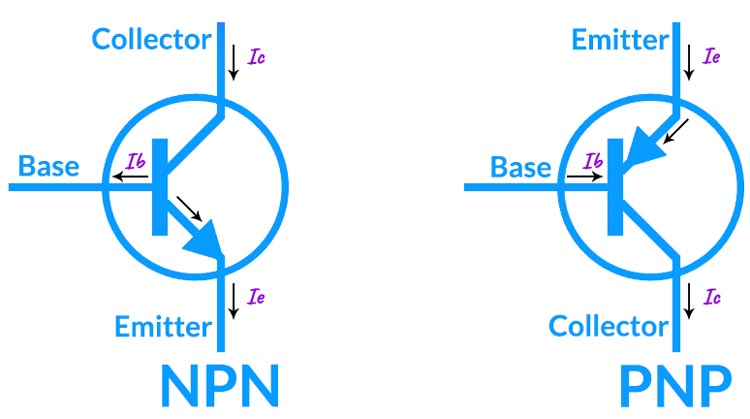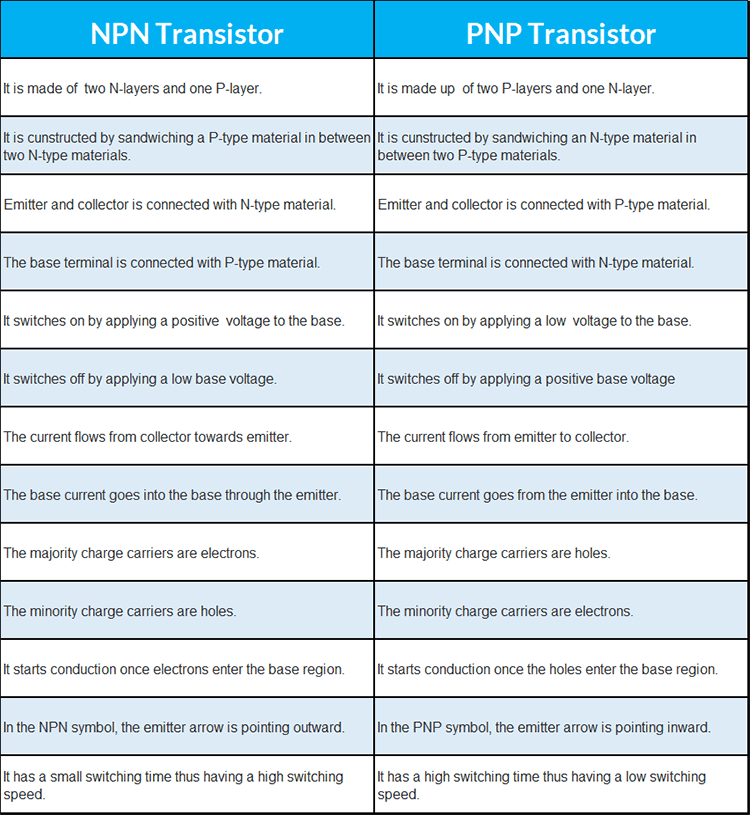1555F Series enclosures have several innovative features that provide excellent functionality
Transistors: Differences between NPN and PNP Transistors

Transistors are the most important invention in the field of electronics. The invention of transistor revolutionized the electronics industry. The transistor is a three-terminal current control device, that can be used to create complex electronic circuits. Even though there are other types of transistors, Bipolar Junction Transistors (BJT) are still popular and used everywhere. So, we will discuss about BJTs and then difference between NPN and PNP transistors.
The basic principle of operation of both NPN and PNP transistors are the same. The only difference is in their basing and the power supply polarity for each type. In NPN transistor the current flow between collector to emitter when a positive supply is given to the base. But in PNP transistor the current flows from emitter to collector when the base is supplied with a negative supply.

As the name indicates an NPN transistor is constructed by sandwiching a P-type material in between two N-type materials, whereas in a PNP transistor, an N-type material is sandwiched in between two P-type materials. In an NPN transistor electrons are the majority charge carriers, whereas in a PNP the majority charge carriers are the holes, because of this the NPS transistors have faster recovery time when compared to the PNP type. It leads to the NPN having a very small switch ON and Switch OFF time, therefore offering a very high switching speed. The image below demonstrates the typical structure of both NPN and PNP transistors.

Here are the key differences between NPN and PNP transistors in table.













